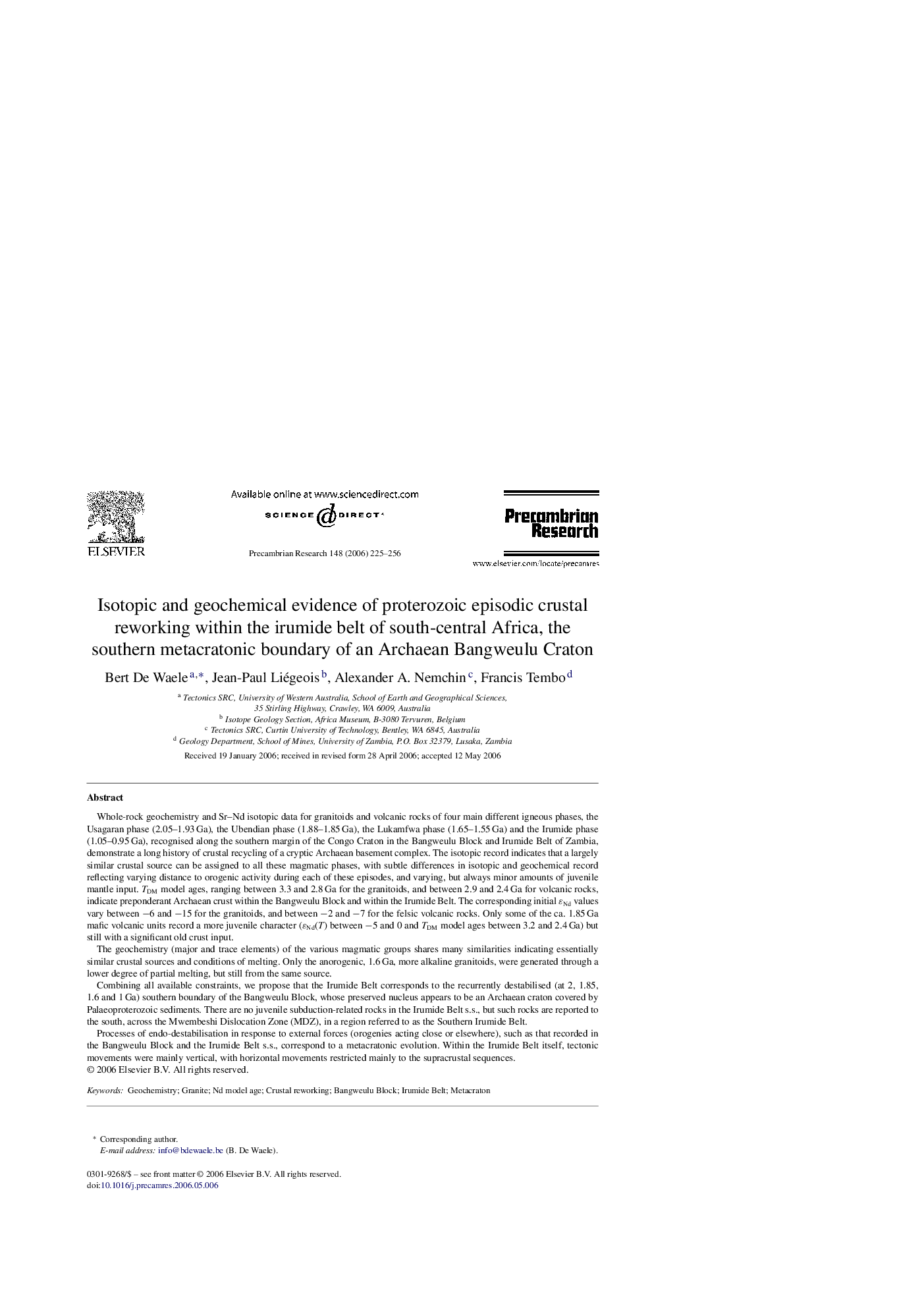| Article ID | Journal | Published Year | Pages | File Type |
|---|---|---|---|---|
| 4724703 | Precambrian Research | 2006 | 32 Pages |
Whole-rock geochemistry and Sr–Nd isotopic data for granitoids and volcanic rocks of four main different igneous phases, the Usagaran phase (2.05–1.93 Ga), the Ubendian phase (1.88–1.85 Ga), the Lukamfwa phase (1.65–1.55 Ga) and the Irumide phase (1.05–0.95 Ga), recognised along the southern margin of the Congo Craton in the Bangweulu Block and Irumide Belt of Zambia, demonstrate a long history of crustal recycling of a cryptic Archaean basement complex. The isotopic record indicates that a largely similar crustal source can be assigned to all these magmatic phases, with subtle differences in isotopic and geochemical record reflecting varying distance to orogenic activity during each of these episodes, and varying, but always minor amounts of juvenile mantle input. TDM model ages, ranging between 3.3 and 2.8 Ga for the granitoids, and between 2.9 and 2.4 Ga for volcanic rocks, indicate preponderant Archaean crust within the Bangweulu Block and within the Irumide Belt. The corresponding initial ɛNd values vary between −6 and −15 for the granitoids, and between −2 and −7 for the felsic volcanic rocks. Only some of the ca. 1.85 Ga mafic volcanic units record a more juvenile character (ɛNd(T) between −5 and 0 and TDM model ages between 3.2 and 2.4 Ga) but still with a significant old crust input.The geochemistry (major and trace elements) of the various magmatic groups shares many similarities indicating essentially similar crustal sources and conditions of melting. Only the anorogenic, 1.6 Ga, more alkaline granitoids, were generated through a lower degree of partial melting, but still from the same source.Combining all available constraints, we propose that the Irumide Belt corresponds to the recurrently destabilised (at 2, 1.85, 1.6 and 1 Ga) southern boundary of the Bangweulu Block, whose preserved nucleus appears to be an Archaean craton covered by Palaeoproterozoic sediments. There are no juvenile subduction-related rocks in the Irumide Belt s.s., but such rocks are reported to the south, across the Mwembeshi Dislocation Zone (MDZ), in a region referred to as the Southern Irumide Belt.Processes of endo-destabilisation in response to external forces (orogenies acting close or elsewhere), such as that recorded in the Bangweulu Block and the Irumide Belt s.s., correspond to a metacratonic evolution. Within the Irumide Belt itself, tectonic movements were mainly vertical, with horizontal movements restricted mainly to the supracrustal sequences.
